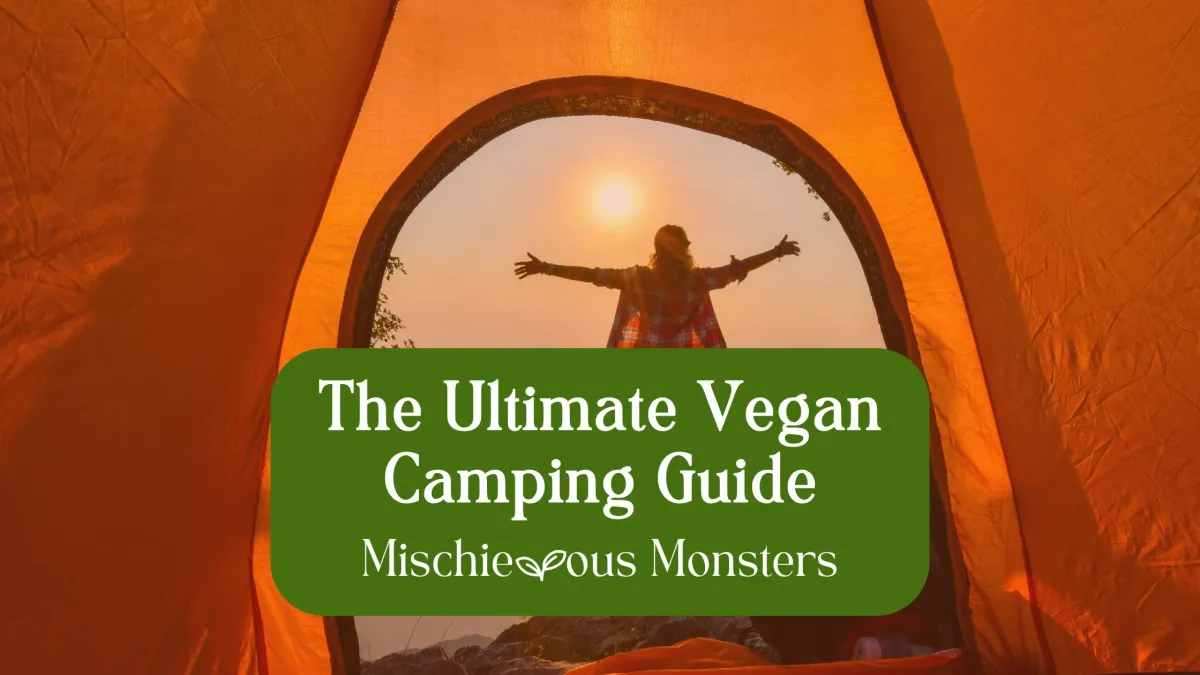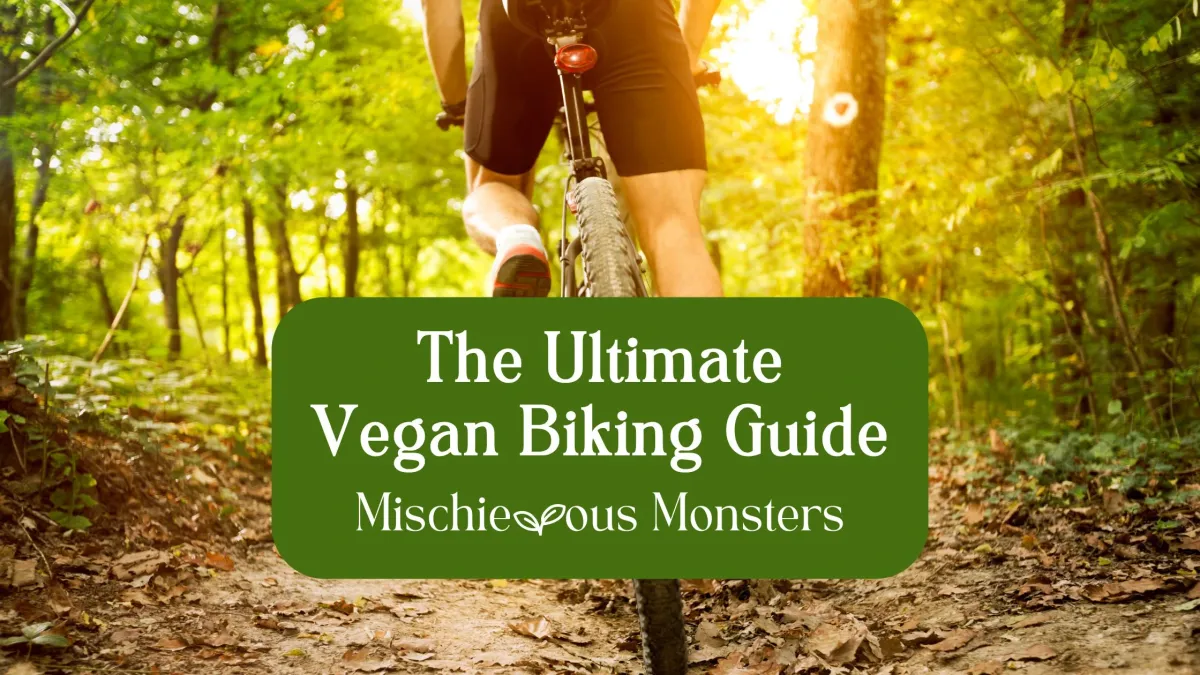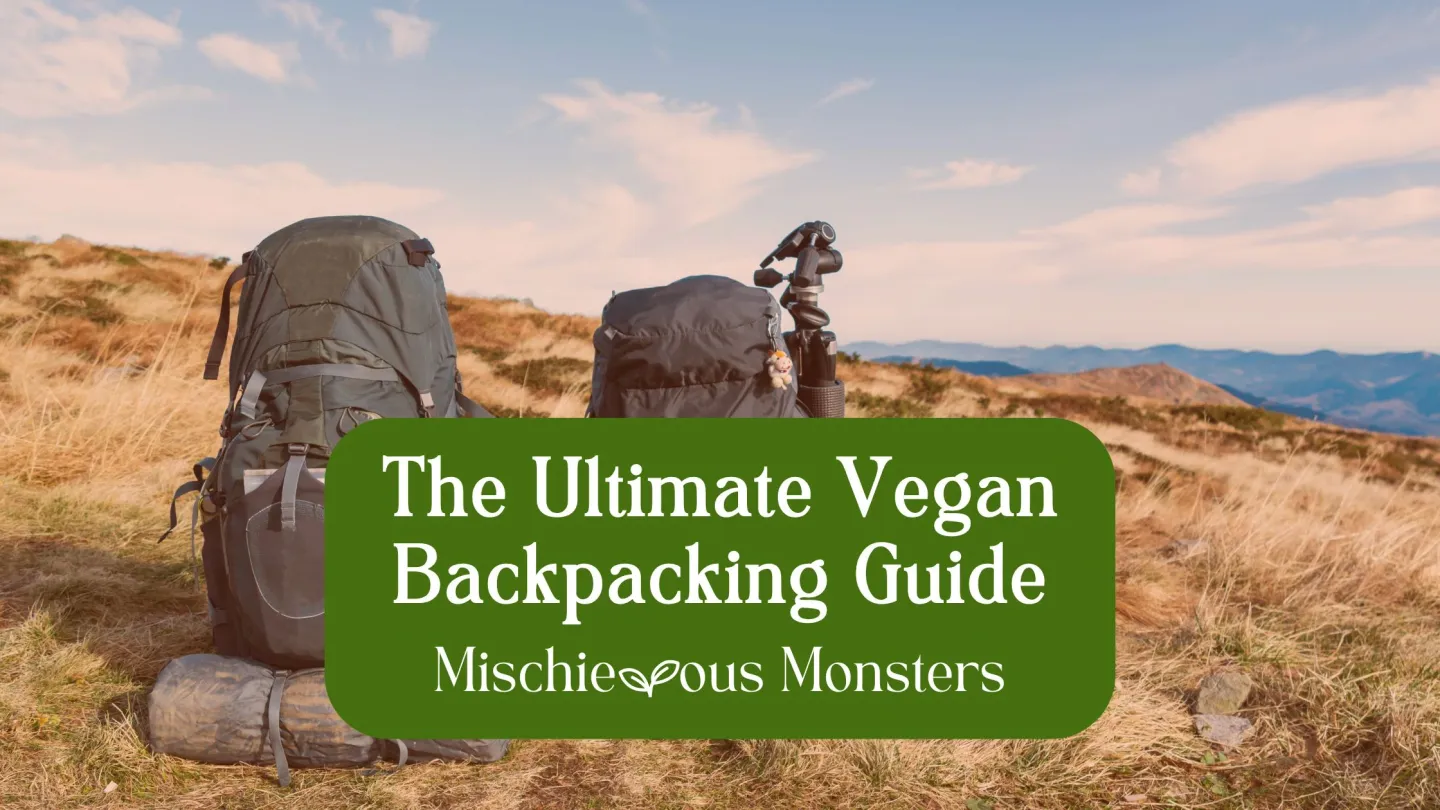Reconnecting with Nature, the Vegan Way
Backpacking is more than a hike. It's a reset button for your soul. It's about slowing down, tuning in, and rediscovering your connection to the earth. Every mountain peak, forest stream, and starlit night reminds us how deeply we belong to nature.
Vegan backpackers take that connection a step further. By leaving animal products behind, we tread lightly on the planet and live our values with every meal we make and every footprint we leave. Whether you're new to backpacking or a seasoned trailblazer looking to align your adventures with your ethics, this guide will help you eat well, travel responsibly, and stay inspired.
Because backpacking—like veganism—is a journey, not a destination. You learn by doing, by trying, by aspiring to do better with every trip. Let's hit the trail.
Why Go Vegan in the Backcountry?
Environmental Impact
Backpacking is all about simplicity—carrying only what you need and leaving no trace. A vegan diet fits that philosophy perfectly.
Plant-based foods have a much smaller environmental footprint, both in production and in packaging. Dehydrated vegan meals and homemade trail mixes tend to be lighter, less wasteful, and easier on the planet.
By choosing plants over animal products, you're reducing your impact on fragile ecosystems—the very places you're out there to appreciate.
Ethics and Wildlife
When you're hiking through forests, crossing meadows, or camping near rivers, you're a guest in someone else's home. Every squirrel, bird, deer, and insect belongs there—and vegan backpacking honors that.
It's about coexisting with wildlife rather than consuming them, respecting the natural balance of the backcountry. There's something deeply grounding about knowing your meals don't harm the creatures you might spot on the trail.
Health and Energy
Trail life demands steady energy and reliable nutrition. Plant-based foods provide exactly that—clean-burning fuel that keeps you going mile after mile.
Whole grains, nuts, seeds, and dried fruits offer complex carbs and lasting energy, while legumes and soy-based proteins aid muscle recovery after long hikes. Many backpackers also find vegan foods easier to digest, helping them feel lighter and more energized on the move.
Confessions of a Backpacking Wannabe
I'm not going to pretend that I'm some serious backpacker. I am an amateur who only really knows how to prepare for a day-long hike and nothing beyond that.
Someday, it would be nice to learn how to do a multiday backpacking excursion, but for now, I'm taking baby steps towards being more adventurous outdoors.
I wish I could figure out a way to go camping. Unfortunately, I am a bug magnet, and I'm not very comfortable going to the bathroom unless I use a toilet.
In the meantime, I'm doing my research and letting you know what I've learned. I hope you get a thing or two from this blog post.
Why Hydration Matters
Water is your most important piece of gear—more essential than your stove, tent, or even food. In the backcountry, dehydration can sneak up fast, especially when you're hiking long distances, carrying extra weight, or gaining elevation.
Even mild dehydration can lead to fatigue, headaches, dizziness, and poor decision-making—none of which you want when you're miles from civilization. Staying hydrated helps regulate your body temperature, keeps your joints lubricated, and supports digestion and energy production. Simply put: water fuels every part of your adventure.
Hydration Beyond Water
Plain water is vital, but it's only part of the story. When you sweat, you lose electrolytes like sodium, potassium, and magnesium—minerals that keep your muscles firing and your heart beating smoothly. Losing too many can lead to cramps, weakness, and exhaustion.
That's where vegan electrolytes come in. Pack electrolyte tablets, drink mixes, or powder packets that are free from animal-derived ingredients and artificial dyes. Some great natural options include:
- Coconut water powder: Lightly sweet, hydrating, and rich in potassium.
- Sea salt and maple sugar blend: A simple DIY electrolyte mix.
- Dried fruit or dates: Offer quick energy and trace minerals.
On longer treks, alternate between plain water and an electrolyte drink to keep your hydration balanced without overloading on sugar.
Smart Hydration on the Trail
Hydration isn't just about how much you drink—it's about how you drink. Gulping large amounts at rest stops can leave you bloated and still dehydrated later. Instead, sip steadily throughout the day, even if you're not feeling thirsty.
Here are a few smart strategies:
- Hydration bladder: Allows easy sipping without stopping.
- Collapsible bottles: Lightweight and packable once empty.
- Cold-weather tip: Mix a little warm water with your supply to prevent freezing in low temps.
- Plan your refills: Use maps or apps like Gaia GPS or FarOut to locate streams and lakes along your route.
Always carry a lightweight water filter or purifier (like a Sawyer Squeeze or LifeStraw) and a backup purification method—you never want to run dry because of a clogged filter or muddy source.
Eco-Friendly Hydration Choices
Being vegan often comes with a love for protecting the planet—and hydration habits are a perfect place to reflect that.
- Skip single-use plastics: Bring a durable, reusable bottle or bladder. Stainless steel or BPA-free options last for years.
- Boil and clean responsibly: Use biodegradable soap and wash dishes or bottles at least 200 feet away from natural water sources.
- Leave No Trace: Don't dump flavored water or electrolyte residue near streams; pack out all waste and packaging.
Hydrating responsibly means more than quenching your thirst—it's about respecting the ecosystems that make backpacking so magical. Every stream you cross and every lake you filter from is part of a living landscape worth protecting.
Preparing for Your First (or Next) Vegan Backpacking Trip
Backpacking is part adventure, part experiment—and no one gets it perfect the first time. Whether you're heading out for your first overnight or your tenth multi-day trek, preparation makes all the difference. From what you pack to how you plan, these tips will help you create a lighter, smarter, and tastier vegan adventure.
Gear Basics
Your gear is your lifeline, but it doesn't need to weigh you down. Aim for a "light but functional" setup that covers safety, comfort, and nutrition without overpacking.
- Cooking gear: A compact stove, one lightweight pot, and reusable utensils are all you really need. Titanium or aluminum cookware cuts down on weight while holding up to daily use.
- Food storage: Use bear-safe containers or odor-proof bags to protect your food and wildlife.
- Water system: A refillable filter or purifier is far more sustainable—and reliable—than packing bottled water.
- Vegan-friendly gear tip: Look for equipment made without leather, wool, or down. Many brands now label cruelty-free options designed for outdoor performance.
Remember: every ounce counts. Your goal isn't just to survive—it's to enjoy the journey without feeling like a pack mule.
Food Planning
You'll burn thousands of calories a day hiking, climbing, and setting up camp, so fueling right is key. Vegan backpacking is all about balance: enough calories for energy, enough protein for recovery, and foods that are light, durable, and easy to cook.
Build your meals around:
- Calorie-dense staples: Oats, quinoa, rice, or couscous.
- Plant proteins: Lentils, beans, textured vegetable protein (TVP), and tofu jerky.
- Healthy fats: Nuts, seeds, coconut, and olive oil packets for extra calories.
- Flavor boosters: Nutritional yeast, spices, and miso paste bring excitement to even the simplest meals.
Think about cooking time and cleanup, too—quick-cooking meals save fuel and let you spend more time enjoying the view instead of scrubbing pots.
Shopping and Packing Tips
The vegan trail pantry starts at home (or your favorite co-op). You'll be surprised how many shelf-stable, nutrient-packed foods fit easily into your backpack.
Shopping list staples
- Nut butters and trail mixes
- Instant oats or overnight oats in jars
- Dehydrated lentils and beans
- Shelf-stable tofu or tempeh (vacuum-sealed)
- Dried fruits and veggies
- Vegan jerky and energy bars
DIY route
If you have a dehydrator, make your own backpacking meals—think chili, curry, or pasta sauces. You'll cut costs, reduce packaging waste, and know exactly what’s in your food.
Packing tips
- Repackage bulk items into lightweight, reusable bags or silicone pouches.
- Label meals by day so you don't overpack or under-eat.
- Store oils and sauces in small leakproof containers.
Embrace the Learning Curve
Every trip teaches you something new—maybe your lentil soup was perfect, but you packed way too much oatmeal. Or maybe your new stove is great, but your pot is too small. It's all part of becoming a more confident, capable backpacker.
Start small, keep notes, and experiment. Over time, you'll learn:
- Which foods make you feel best on the trail.
- How to balance nutrition, taste, and pack weight.
- What gear and routines make camping smoother and more enjoyable.
Backpacking—like veganism—is a journey of growth and curiosity. With every trail you hike and every meal you cook, you're building both skills and stories. So pack your sense of adventure (and maybe a few snacks), and get ready to learn from the wilderness itself.
Meet Aaron Owens Mayhew from Backcountry Foodie
Earlier this fall, Aaron Owens Mayhew, Founder of Backcountry Foodie, came across my blog after getting a Google alert for my previous blog post on my vegan camping guide and offered me the affiliate opportunity to put something together for vegan backpacking ideas. Then, I would get a small commission if anyone purchases a meal plan through their website at no cost to my blog visitors.
I thought that was an awesome way to learn more about backpacking. I haven't done a lot of collabs before. It took longer than expected to produce this blog post because I have a full-time job outside of my blog, and my personal life sometimes overtakes my blogging. However, it's better late than never.
Someday, my dream is to work full-time doing hobbies I enjoy, rather than the stereotypical 9-to-5 job. Until then, I won't always have a consistent blogging schedule, as my personal life dictates the frequency of my posts.
Anyway, the best part of Backcountry Foodie is that they are making a lot of the recipes vegan-friendly. In other words, the recipes are customizable according to your diet, and many times, there is a vegan option for the same recipe. Also, she mentioned that she's compiling a lot more vegan backpacking recipes for the vegan, vegetarian, and plant-based backpackers out there. I guess you have to keep tabs on their socials to get the latest scoop.
They currently have three backpacking meal plans to choose from.
- Recipe Membership: You'll get access to over 250 backpacking recipes, and many are vegan-friendly.
- Meal Planner Membership: In addition to the recipes, this tier includes access to an exclusive backpacking meal planner that will facilitate your next vegan backpacking adventure and a community forum that will connect you to fellow hikers.
- Meal Planner+ Membership: Besides the aforementioned benefits, the most exclusive membership to on-demand master classes on all things backpacking, from Backpacking Food 101 to Ultralight Meal Planning.
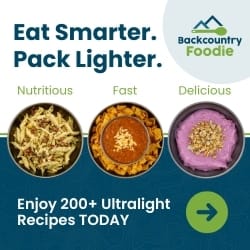
Sample Vegan Backpacking Meals and Snacks
Eating well on the trail isn't just possible—it's one of the most rewarding parts of backpacking. A good vegan meal plan keeps you energized, satisfied, and excited for every day's adventure. Here are some meal ideas from Backcountry Foodie.
Vegan Breakfast
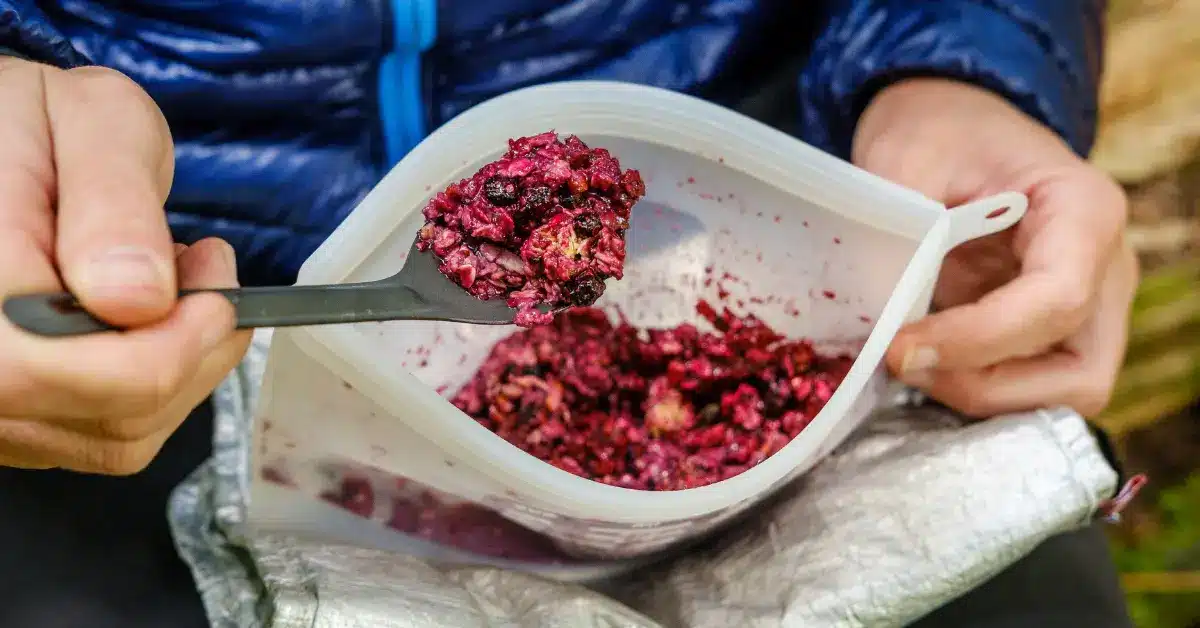
Vegan Lunch/Supper/Dinner Ideas
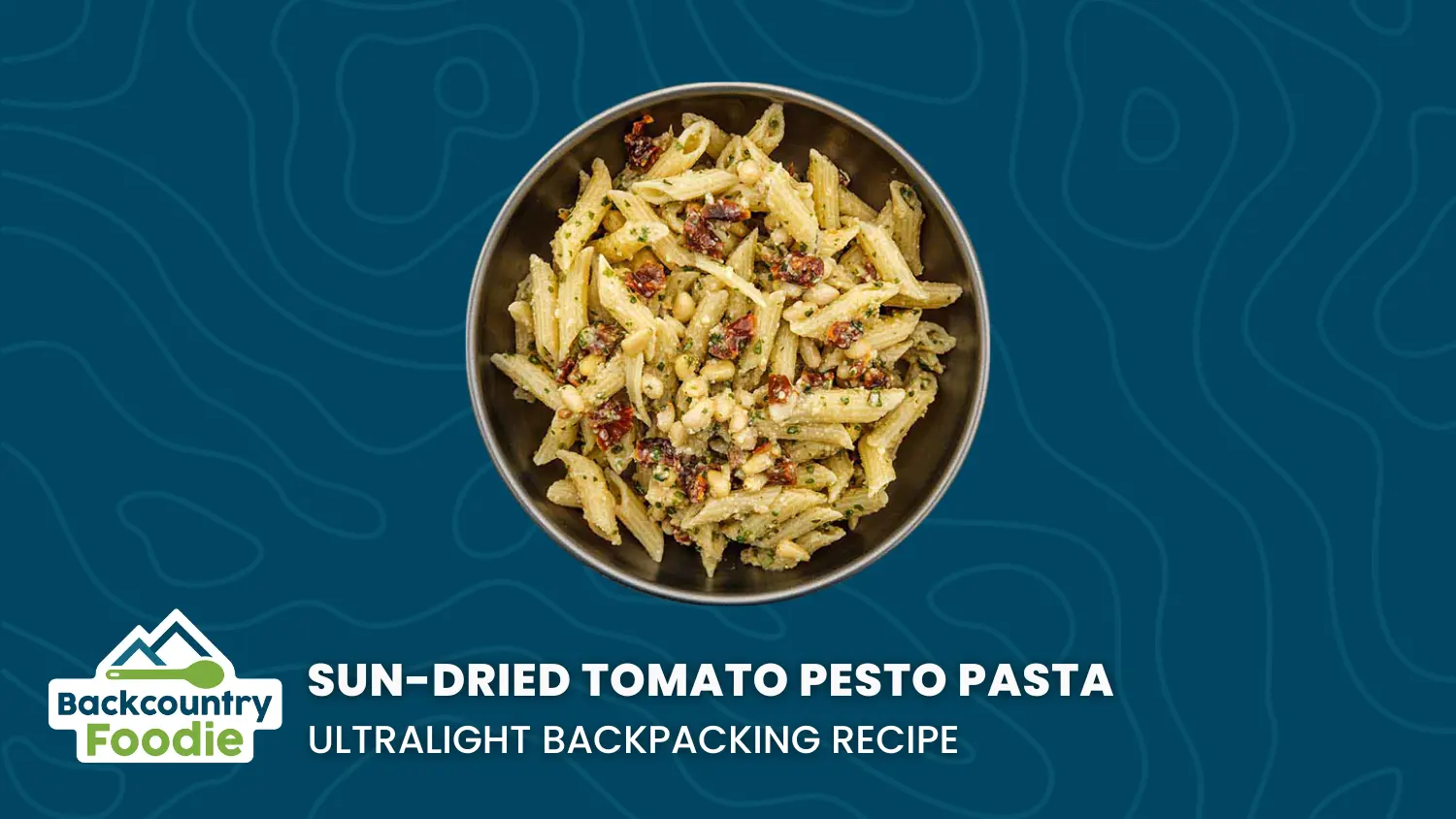

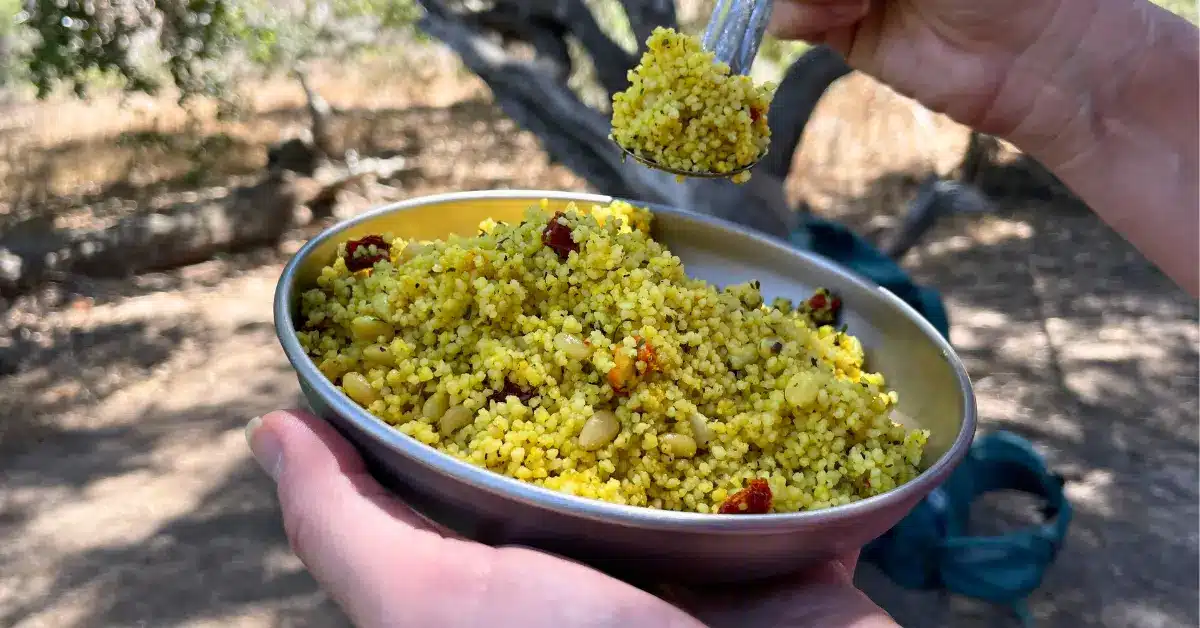
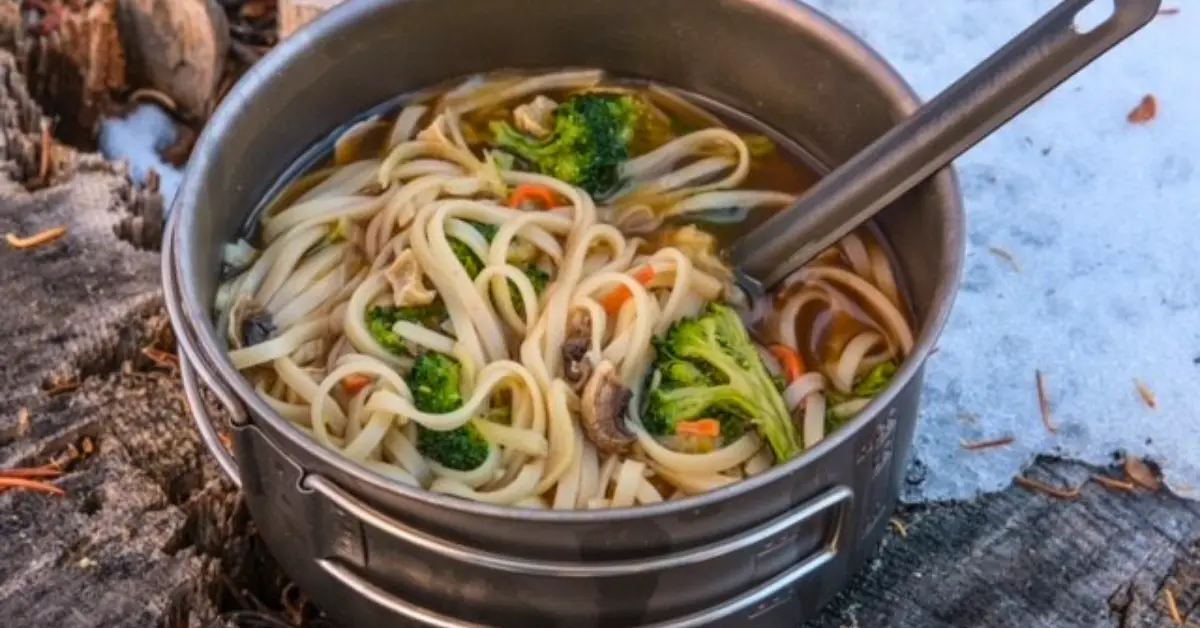
Vegan Dessert
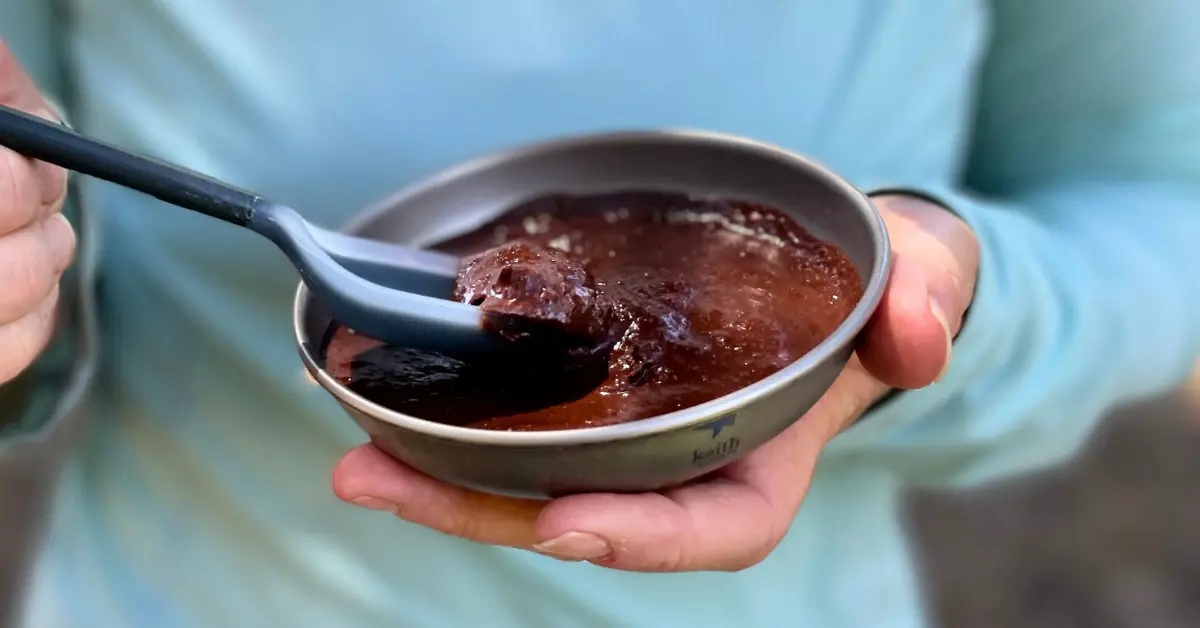
Vegan Snack
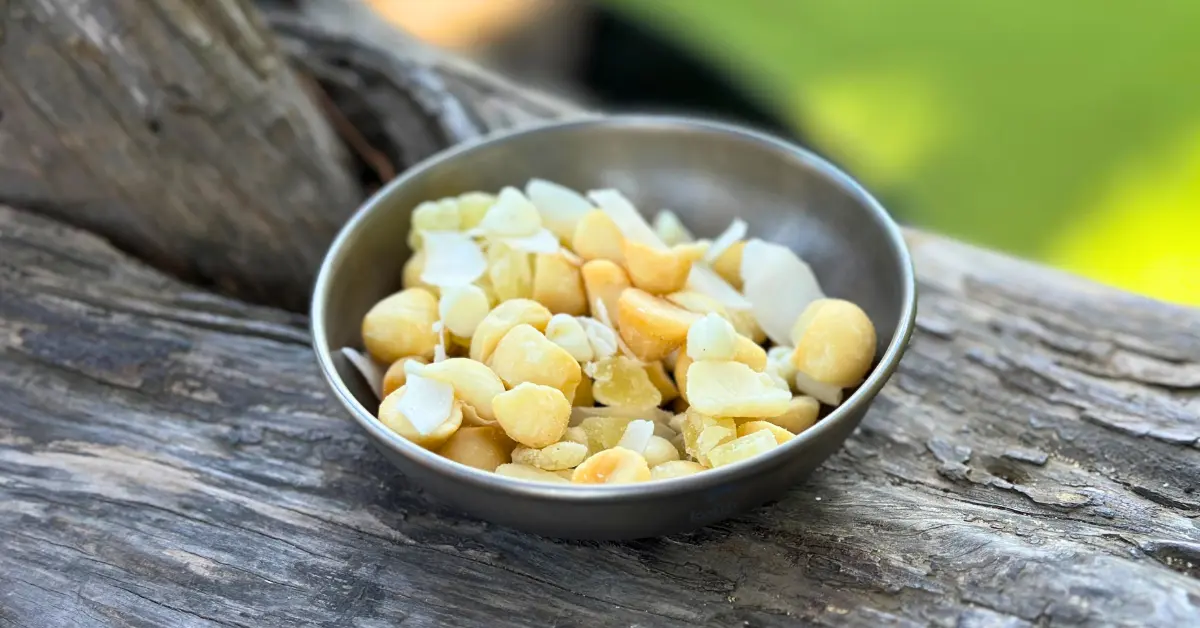
Vegan Beverage
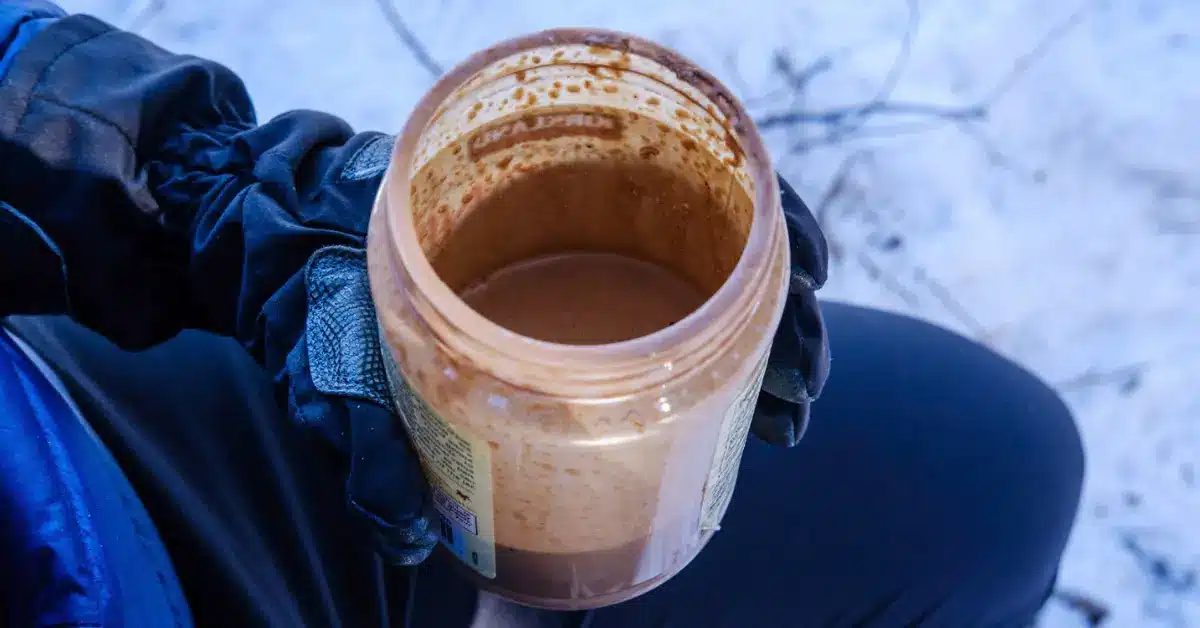
Vegan Backpacking Destinations Around the World
One of the joys of backpacking is how universal it is—every continent has trails that challenge, inspire, and connect you to nature in its purest form. For vegan backpackers, these destinations also offer opportunities to experience local plant-based flavors, eco-conscious travel communities, and some truly jaw-dropping scenery.
North America
Pacific Crest Trail (USA)
Stretching over 2,600 miles from Mexico to Canada, the PCT offers everything from desert scrub to snow-capped peaks. Major stops like Ashland, Bend, and South Lake Tahoe have surprisingly vegan-friendly cafés and co-ops perfect for resupplying.
Appalachian Trail (USA)
This East Coast classic winds through 14 states. Look for vegan comfort food and trail magic from hiker-friendly towns like Gatlinburg, Tennessee, and Hanover, New Hampshire.
Banff National Park (Canada)
A visual feast of turquoise lakes and alpine peaks. While in Banff, you'll find cozy cafés serving lentil soups, veggie burgers, and oat milk lattes—proof that even in the Rockies, vegan options abound.
Grand Canyon (USA)
Rugged, raw, and humbling—the Grand Canyon offers accessible vegan-friendly dining in Tusayan and Williams and nearby cities of Flagstaff and Sedona, and plenty of space for backcountry exploration.
South America
Patagonia (Chile and Argentina)
Glacier views, fierce winds, and untouched wilderness. Trails like the W Trek or the O Circuit in Torres del Paine are stunning—just bring vegan dehydrated meals, as remote refugios have limited plant-based options.
Some vegan-friendly cities in Patagonia include but are not limited to Bariloche, Neuquén, and Ushuaia in Argentina, and Punta Arenas and Puerto Natales in Chile.
Cordillera Blanca (Peru)
This high-altitude range in the Andes offers challenging treks like Santa Cruz and Huayhuash. Peruvian cuisine is rich in plant foods—quinoa, potatoes, and corn make for hearty vegan fuel. Try vegan dishes in Huaraz while hiking and heading to Lima before and after the trek.
Europe
Tour du Mont Blanc (France, Italy, and Switzerland)
This loop around Western Europe's highest peak mixes breathtaking mountain scenery with cozy villages—many refuges now cater to vegan hikers with veggie stews and hearty grains.
Some vegan-friendly designation along the way include:
- France: Chamonix, Les Houches, Argentière, and Les Contamines.
- Italy: Courmayeur
- Switzerland: La Fouly and Trient
Scottish Highlands (Scotland)
Misty mountains, lochs, and sprawling glens. Towns like Fort William and Aviemore have local cafés with vegan breakfast rolls and hearty soups, perfect for pre-hike or post-hike indulgence.
The Dolomites (Italy)
A UNESCO World Heritage site of sheer cliffs and wildflower meadows. Try polenta, mushrooms, and veggie ragù in mountain huts—Italian vegan cuisine shines even in alpine settings.
Some vegan-friendly shops along the way include Cortina d'Ampezzo, Bolzano, Bressanone, and Merano.
Annapurna Circuit (Nepal)
A dream trek for many. Nepal's Buddhist and Hindu influences make vegan food easy to find—lentil dal, rice, and veggie curries are staples at teahouses.
Kumano Kodo Trail (Japan)
This sacred pilgrimage route weaves through cedar forests and mountain temples. Look for shojin ryori (traditional Buddhist cuisine that's often vegan) along the way—simple, balanced, and deeply nourishing.
Africa and Oceania
Drakensberg Mountains (South Africa)
Towering basalt cliffs, waterfalls, and lush valleys. The region's guesthouses often serve vegetable curries and maize porridge that are naturally vegan-friendly. There are also some vegan-friendly restaurant options in the area.
Tasmania's Overland Track (Australia)
Six days of wilderness through alpine plains and ancient rainforests. Tasmania's eco-lodges and markets often cater to plant-based travelers—pack local nuts and dried fruit for snacks.
New Zealand's Great Walks
From the lush Milford Track to volcanic Tongariro Northern Circuit, New Zealand is a vegan backpacker's paradise. Many hostels and trail towns feature organic grocers and vegan cafés like Waimarino.
Pro Tip
Before hitting the trail, check for vegan-friendly cafés, co-ops, or bakeries near trailheads—mountain towns often have hidden gems with plant-based options. HappyCow is my go-to for learning about vegan-friendly food establishments while traveling.
Sustainability Beyond the Plate
Being vegan in the backcountry isn't just about what you eat—it's about how you travel. True sustainability means minimizing your impact on the environment, the wildlife, and the communities you pass through. Every small choice adds up to a big difference.
Leave No Trace
The golden rule of backpacking: leave nature as you found it—or better. Always pack out what you pack in, from food wrappers to biodegradable wipes. Avoid washing dishes or brushing teeth directly in streams, and stick to marked trails to protect fragile ecosystems.
Reduce Waste
Pre-packaged meals are convenient, but they often come with layers of plastic. Dehydrate your own meals at home using reusable silicone bags or lightweight containers. Not only does this reduce waste, but it also allows you to control the ingredients and flavor if you do use packaged food, repack portions to minimize bulk and trash.
Support Local
Whenever you stop in towns along your route, choose local vegan-friendly cafés, small farmers' markets, or eco-lodges. Supporting local producers reduces transport emissions and helps sustain communities that depend on tourism. Plus, fresh local produce often means better flavor and fewer preservatives.
Choose Cruelty-Free Gear
From your boots to your sleeping bag, you can adventure kindly. Many outdoor brands now offer synthetic, high-performance alternatives to down, leather, and wool. Look for gear made with recycled materials and cruelty-free certifications. Not only are these options ethical, but they also perform beautifully in wet and cold conditions—no animal products required.
Every Step Counts
Sustainability doesn't stop when the trail ends. Your choices—how you pack, shop, and gear up—can protect the wild spaces you love to explore. A vegan approach to backpacking is one of respect, balance, and stewardship, ensuring that nature thrives for generations of hikers to come.
Challenges and How to Overcome Them
Even the most seasoned vegan backpacker will admit—hitting the trail plant-based comes with its own set of curveballs. But like any good adventure, those challenges are what make the journey more meaningful. Here's how to tackle the most common ones with creativity, confidence, and a bit of trail magic.
Finding Vegan Food in Remote Areas
Rural trail towns and backcountry resupply points can be tricky when you're looking for vegan options. Gas stations and small stores often carry only the basics—usually heavy on jerky, cheese, and instant noodles.
How to overcome it
Plan ahead. Research resupply towns before your trip to see if there are grocery stores or co-ops with plant-based options. If not, consider sending yourself a food drop—a package of dehydrated vegan meals, snacks, and staples mailed to a post office or hostel along your route. For shorter trips, pack everything you'll need from home so you don't have to rely on local stores at all.
Bonus tip
Many hikers now use apps like FarOut or AllTrails to read recent trail reviews and find notes on vegan-friendly stops nearby.
Protein Myths and Nutrition Concerns
"Where do you get your protein?" It's a question that follows vegans everywhere—even into the wilderness. Some worry they won't get enough fuel for intense hikes.
How to overcome it
Protein is everywhere in plants—it's just a matter of knowing your sources. Lentils, beans, quinoa, TVP (textured vegetable protein), soy curls, nuts, and seeds are all nutrient-dense, lightweight, and easy to cook. Combine carbs and proteins (like rice and beans or oats and nut butter) to stay energized.
Trail hack
Dehydrate your own high-protein stews or lentil curries before a trip. You'll have complete control over ingredients, and they rehydrate beautifully on the trail.
Group Trips with Non-Vegan Hikers
When you're hiking with others who aren't vegan, food can sometimes feel like a social barrier. Campfire dinners, group cookouts, or shared snacks can make you feel like the odd one out.
How to overcome it
Lead with curiosity and kindness. Offer to share your meals—vegan chili, peanut noodles, or energy balls are crowd-pleasers even for meat-eaters. Often, once people taste how flavorful plant-based food can be, they're surprised (and impressed).
And if you're cooking separately, no big deal—just use it as a chance to show that vegan backpacking is simple, satisfying, and totally doable.
Fuel Efficiency and Cooking Challenges
Some vegan staples (like beans or whole grains) can take a long time to cook, which uses precious stove fuel—not ideal when you're miles from your next fuel stop.
How to overcome it
Focus on quick-cooking grains such as couscous, instant rice, or quinoa flakes. Dehydrate meals at home so they're ready to heat and eat. You can even cold-soak certain foods—like oats, couscous, or ramen—by letting them sit in water for a few hours in a jar or container. It saves fuel and lightens your load.
Pro tip
Pack a small insulating sleeve (like a cozy or towel) to wrap around your pot after boiling—it'll retain heat and continue "cooking" your food off-stove.
Embracing the Learning Curve
Even the best-laid plans can go sideways—food spills, burned dinners, soggy oats, or unexpected hunger pangs happen. It's easy to feel frustrated, especially if you're new to vegan backpacking.
How to overcome it
Remember: every mistake is part of the story you'll laugh about later. Treat challenges as part of the adventure, not setbacks. The more you hike, the more you'll learn what your body needs, what gear works best, and which meals become trail favorites.
Staying positive, flexible, and curious turns obstacles into opportunities to grow—both as a hiker and as a compassionate traveler.
Summary
Vegan backpacking has its challenges, but none are dealbreakers. With a bit of planning and creativity, you can thrive on the trail—proving that compassion and adventure can absolutely coexist.
Trail Troubleshooting Cheat Sheet
Because even the best-planned adventures can hit a few bumps (or muddy hills).
| Trail Challenge | What's Wrong | Quick Fix |
|---|---|---|
| Running low on vegan options | Trail towns only have jerky and cheese snacks. | Mail yourself a food drop or pack extra dehydrated meals. Check for nearby co-ops or farmers' markets before your trip. |
| Low energy or protein worries | Feeling sluggish after long days on the trail. | Add nut butter, seeds, or protein powder to meals. Pair carbs and protein (like oats and almonds or rice and lentils). |
| Running out of stove fuel | Meals take too long to cook or fuel canister is low. | Choose quick-cook grains (couscous, ramen, quinoa flakes) or cold-soak oats, rice noodles, or instant beans. |
| Food fatigue | You're tired of the same chili and oats. | Add flavor with spices, coconut milk powder, soy sauce packets, or hot sauce. A little variety goes a long way! |
| Group cooking awkwardness | Everyone's grilling sausages and you've got lentils. | Offer to share your meal! Most hikers love trying something new—especially when it smells amazing. |
| Heavy pack from bulky food | Cans or glass jars are weighing you down. | Repackage into reusable silicone bags or use dehydrated ingredients. Every ounce counts! |
| Bland trail meals | You forgot the salt and it shows. | Pack mini spice blends (paprika, garlic powder, salt) in straws or travel containers. Instant flavor boost! |
| Cooking in bad weather | It's pouring and your stove won't light. | Eat no-cook meals: hummus wraps, nut butter packets, trail mix, or cold-soaked noodles. Stay fed, stay dry. |
| Unexpected non-vegan ingredient | That instant soup mix has milk powder. | Always double-check labels when buying trail food. For emergencies, swap meals or share with your group. |
| Feeling discouraged | The trail is harder than expected or you're craving comfort food. | Take a rest, refuel, and remind yourself: you're learning. Every mile is a step toward becoming a stronger, wiser backpacker. |
Trail Wisdom
The most memorable hikes aren't the perfect ones. They're the ones that teach you something new about yourself (and your cooking skills).
Hiking Toward a Kinder World
Backpacking as a vegan isn't just about skipping animal products—it's about embodying compassion with every mile. Each step you take, each meal you pack, each decision to leave no trace is part of a greater commitment to live gently on this planet we all share.
When you move through nature with intention—fueling yourself with plants, respecting wildlife, and choosing gear that doesn't harm—your veganventure becomes more than a physical journey. It becomes a statement of values. You're showing that exploration and empathy can coexist, that strength doesn't come from domination but from connection.
The trail humbles and teaches you: how little you need, how much beauty surrounds you, and how deeply everything is intertwined. Going vegan in the backcountry amplifies that awareness—turning every sunrise breakfast and starlit dinner into a quiet celebration of life.
So grab your pack, lace your boots, and set out knowing that your path leaves a lighter footprint and a brighter legacy. Whether you're scaling mountains or strolling local trails, you're helping shape a kinder, more sustainable world—one step, one meal, one adventure at a time.
You Might Also Like

